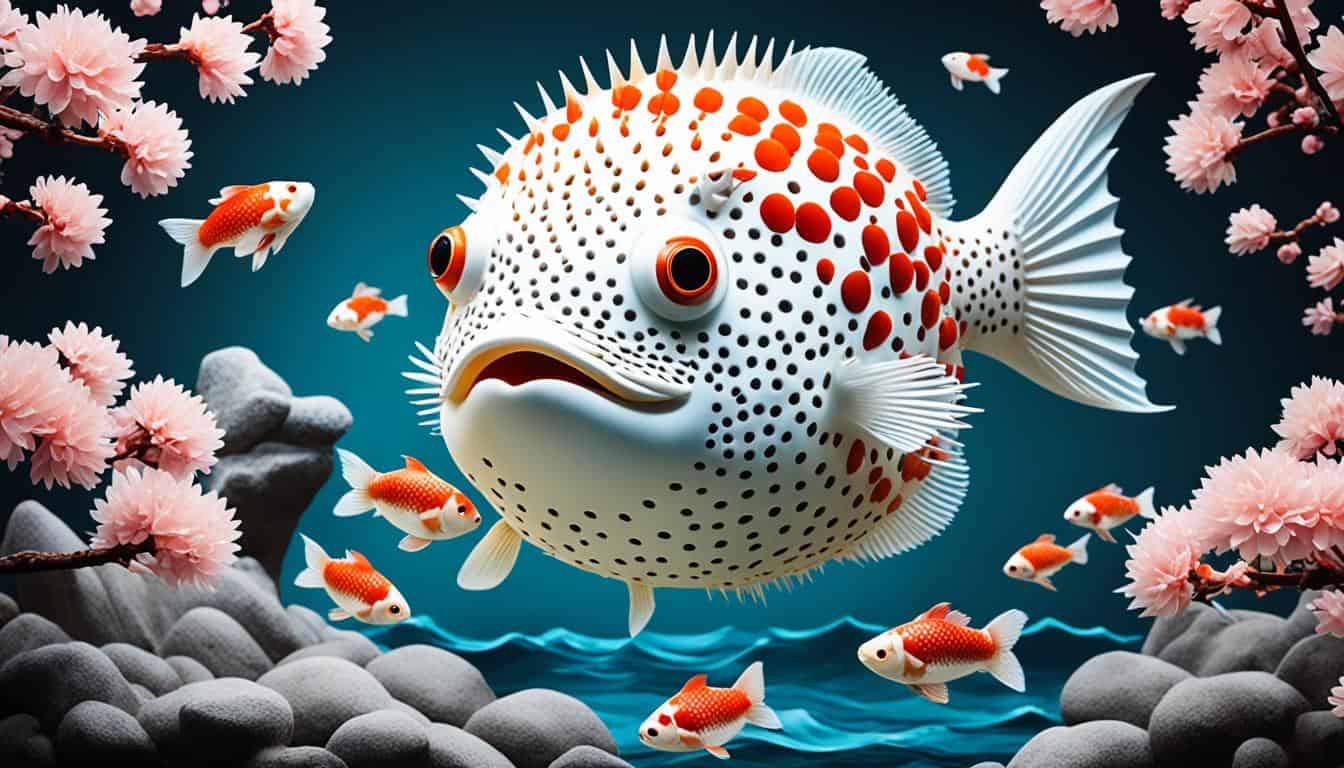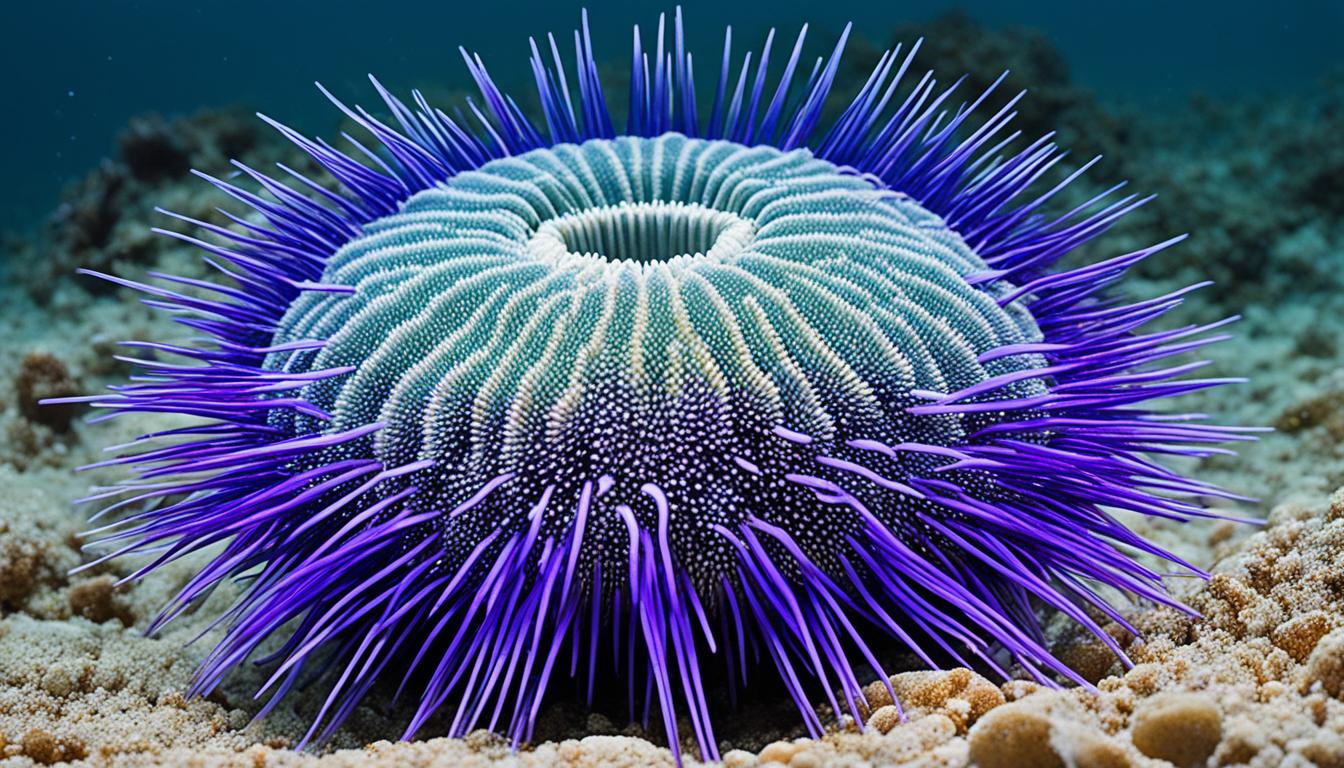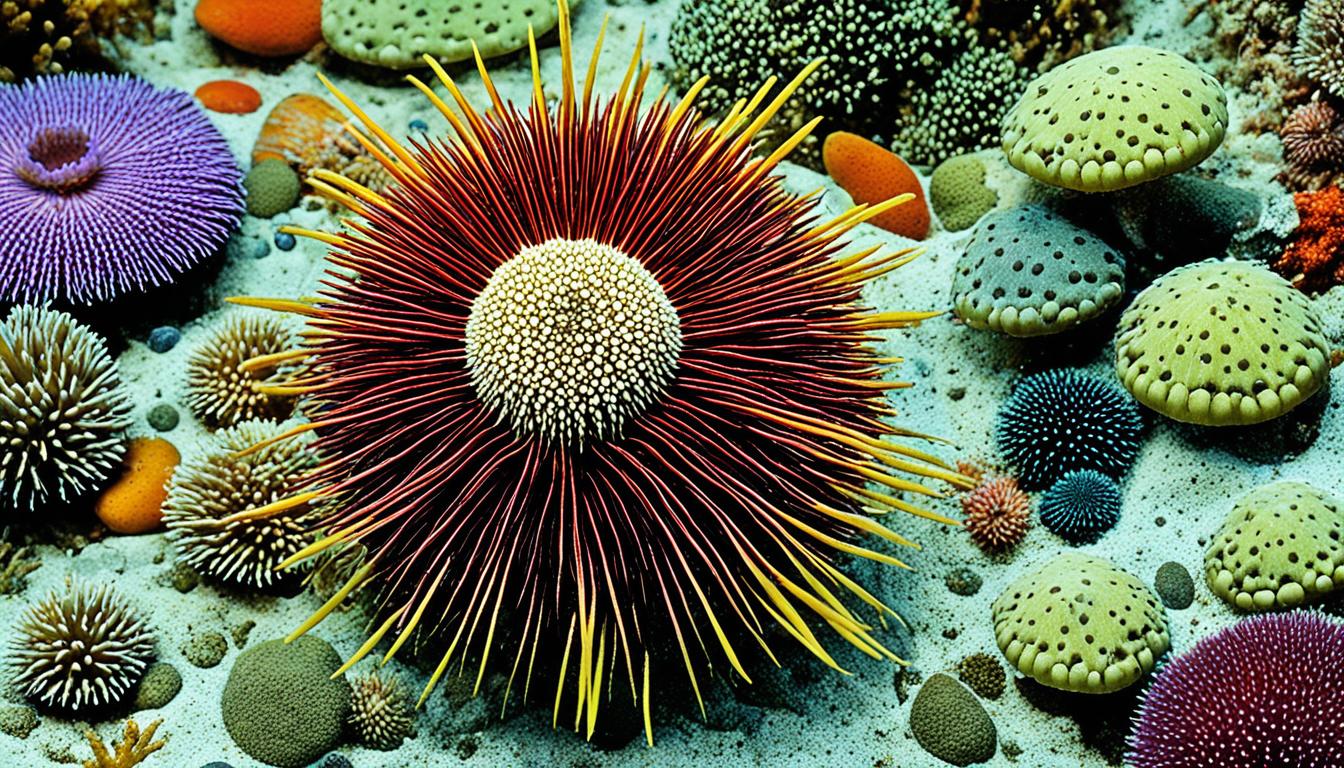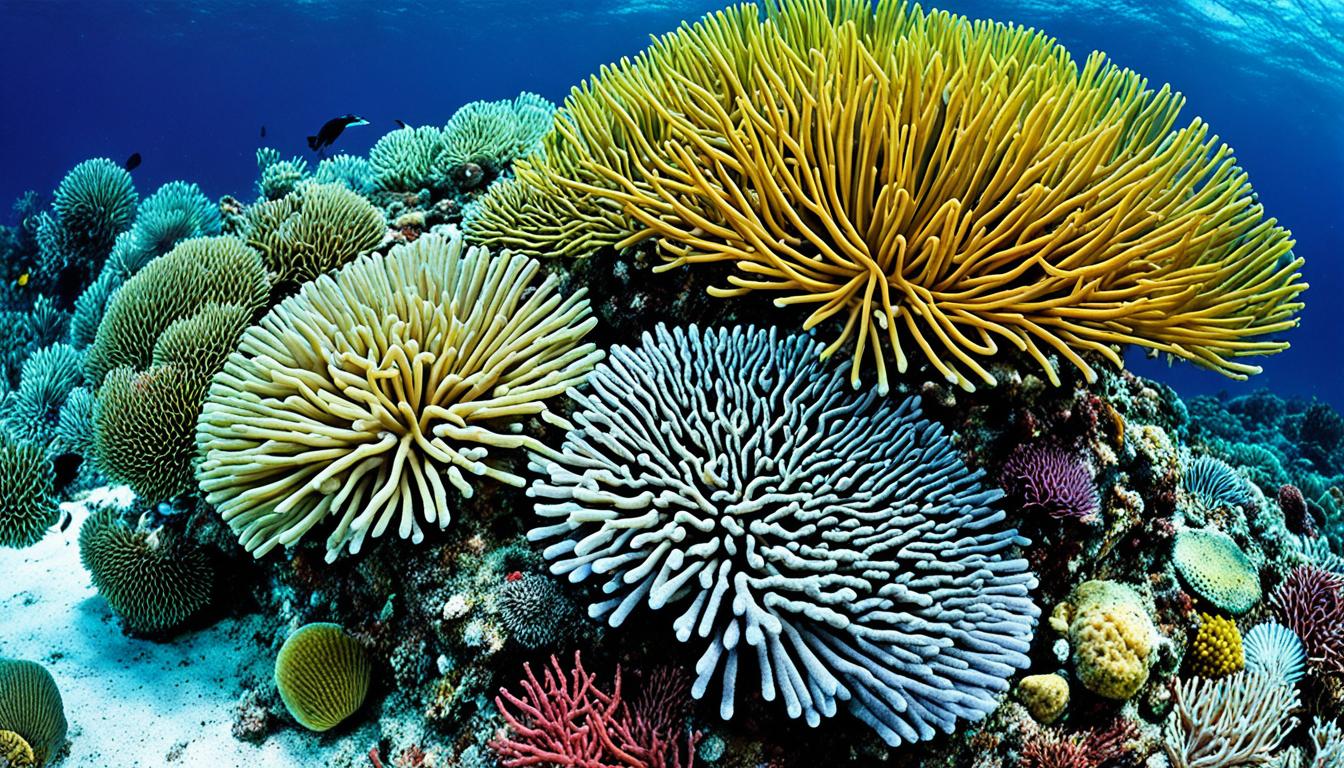Pufferfish hold a special place in many cultures, showing both respect and caution. In Japan, they are known as fugu and are celebrated for their unique ability to puff up. They are also known for being poisonous, which makes them a challenge to prepare safely.
This fish is more than just a food in Japan; it’s a symbol of culinary art. It’s a dish that can be dangerous if not prepared right, but when done correctly, it’s a sign of skill and respect. Let’s explore how pufferfish are seen in culture, their role in stories, and their importance in food.
The Fascinating World of Pufferfish
Pufferfish are fascinating creatures that belong to the family Tetraodontidae. They include over 120 species found all over the world. Learning about pufferfish shows us their amazing adaptations and unique traits. These traits make them important in their ecosystems.
Understanding Pufferfish Biology and Characteristics
Pufferfish are known for their special features. They have a stomach that can inflate as a defense against predators. Most have beak-like teeth that help them eat hard-shelled creatures.
Another interesting fact is that pufferfish can make a toxin called tetrodotoxin. This toxin keeps predators away, but it can be dangerous if not handled safely.
Geographic Diversity of Pufferfish Species
Pufferfish live in both tropical and subtropical waters around the world. Some even live in fresh and brackish waters, showing how adaptable they are. This adaptability shows their strength and their role in different ecosystems.
The variety among pufferfish species tells us how they survive in different places. It gives us a glimpse into their lives in various habitats.
What is the cultural significance of pufferfish?
Pufferfish is a special fish in global cuisine, especially in Japan. It has been a prized delicacy for centuries. Chefs and food lovers around the world cherish it for its unique taste and cultural importance.
The careful way pufferfish is prepared shows its value in the kitchen. It also highlights the deep cultural ties tied to eating it.
Pufferfish in Global Cuisine and Culinary Practices
Pufferfish is more than just food; it’s a tradition that values skill and precision. Chefs worldwide use it, blending it with local tastes and ingredients. This makes it a hit in kitchens everywhere.
They use special methods to bring out the fish’s tender texture and deep flavor. This turns pufferfish into a true work of art in the kitchen.
The Tradition of Fugu: A Cultural Icon in Japan
In Japan, *fugu* is a symbol of culinary tradition. For over 4,000 years, it has amazed diners with its special taste and beautiful presentation. Making fugu is a serious job that requires special training and a license.
This is because the fish has toxins that can be deadly if not prepared right. Only trained chefs can serve fugu, making sure it’s both safe and traditional. Popular ways to enjoy fugu include tessa, a fresh sashimi, and tecchiri, a warm hot pot. These dishes are loved from October to March.
Pufferfish Symbolism and Mythology
The pufferfish is special in many cultures, filled with deep symbolism and myths. Its unique traits lead to deep meanings about life, danger, and change.
Pufferfish in Japanese Folklore and Spiritual Beliefs
In Japan, the pufferfish, called fugu, is seen as both dangerous and fascinating. It stands for the fine line between life and death in Japanese myths. People believe it gives spiritual protection, showing strength against hard times. Legends tell of it as a guardian spirit, linking it to deep human experiences.
Representations in Other Cultures
Outside Japan, the pufferfish is seen differently in various cultures. In the Caribbean and Africa, it symbolizes being adaptable and changing. Its ability to puff up is seen as facing challenges bravely. These stories show how different cultures relate to this unique sea creature.
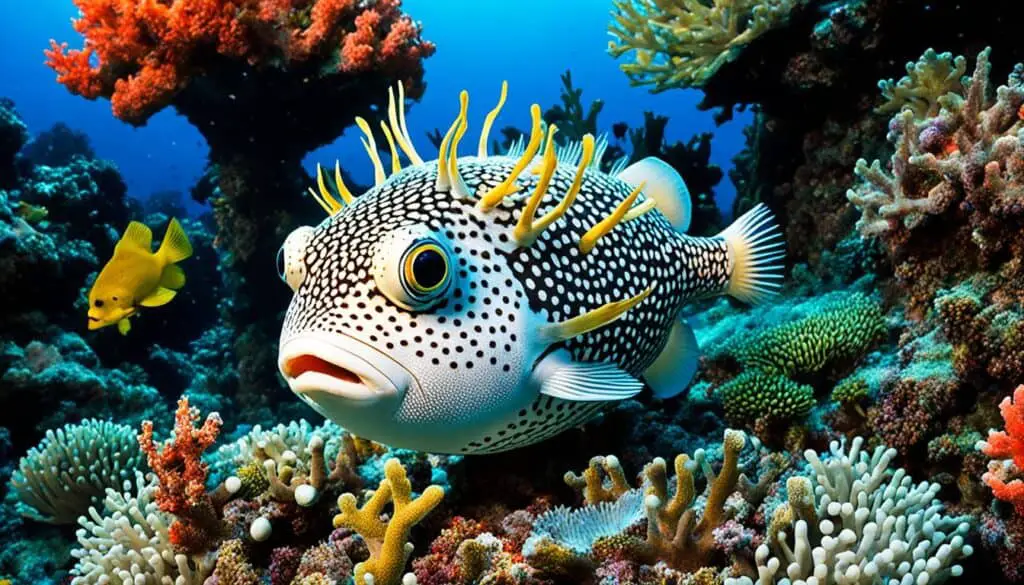
| Culture | Pufferfish Symbolism | Spiritual Meaning |
|---|---|---|
| Japanese | Danger and Allure | Life and Death Balance |
| Caribbean | Adaptation | Strength in Challenges |
| African | Transformation | Resilience |
The Role of Pufferfish in Art and Literature
Pufferfish have been a source of inspiration for artists for many years. They represent a mix of nature’s beauty and danger. This balance is what makes them so interesting to artists.
Artists love the challenge of capturing the pufferfish’s unique look. This has led to many different styles and mediums. It shows how the pufferfish can inspire creativity.
Pufferfish as a Motif in Traditional Japanese Art
In traditional Japanese art, pufferfish are a big deal. You can see them in woodblock prints, paintings, and ceramics. Artists like Katsushika Hokusai and Utagawa Kuniyoshi used them in their work.
These artists showed the beauty and danger of the pufferfish. Their art told stories about the balance between these two sides. The pufferfish is still important in Japanese culture today.
Modern Artistic Interpretations of Pufferfish
Today, artists are finding new ways to use the pufferfish in their work. You might see sculptures, mixed-media pieces, or digital art. These works show the many sides of the pufferfish.
They make us think about the environment, culture, and nature’s balance. These modern takes on the pufferfish keep its spirit alive in the art world.
Conservation and the Future Cultural Importance of Pufferfish
Understanding the need to protect pufferfish is key to fighting the threats they face. Pollution, destroying their homes, and overfishing are big problems. These issues harm their numbers and the ecosystems they live in. By supporting their protection, we help keep nature in balance.
The high demand for fugu, a Japanese delicacy, has led to efforts to fish sustainably. This is vital for keeping pufferfish safe for the future. By choosing responsibly sourced fugu, you help protect these unique fish for years to come.
The cultural value of pufferfish depends on saving them. When we interact with pufferfish, it’s not just about eating a meal. It’s about keeping their stories alive. Together, we can make sure they continue to exist and thrive, preserving their place in our cultures and traditions.
FAQ
What is the cultural significance of pufferfish?
Pufferfish, also known as fugu in Japan, holds deep cultural value. It represents the delicate balance between life and death. It’s also valued for its role in art and cuisine around the world.
Why is fugu considered a delicacy?
Fugu is a delicacy because of its unique taste and texture. It’s also very dangerous to prepare. Only experts can make it safe to eat, adding to its allure in Japan.
How is pufferfish represented in Japanese folklore?
In Japanese stories, pufferfish symbolize strength and spiritual safety. They show how life can change and adapt, reflecting deep cultural beliefs.
What role does pufferfish play in art?
Pufferfish has been a key theme in Japanese art for a long time. It represents the beauty and dangers of nature. Modern artists still use it to connect with traditional ideas, keeping its cultural value alive.
What are the ecological threats faced by pufferfish?
Pufferfish face threats like pollution, losing their homes, and overfishing. These issues harm their numbers and highlight the need for conservation. We must act to protect them for their ecological and cultural roles.
How can I learn more about pufferfish in different cultures?
To learn about pufferfish in various cultures, check out books on mythology, cooking traditions, and art. Museums and cultural centers also have exhibits on these fascinating creatures.

